Abstract
OBJECTIVES: The National Hospital Discharge Survey (NHDS) was used to evaluate potentially avoidable hospital conditions as an indicator of equity and efficiency in the US health care system. METHODS: With the use of 1990 data from the NHDS, the National Health Interview Survey, and the census, national rates of hospitalization were calculated for avoidable conditions by age, race, median income of zip code, and insurance status. RESULTS: An estimated 3.1 million hospitalizations were for potentially avoidable conditions. This was 12% of all hospitalizations in 1990 (excluding psychiatric admissions, women with deliveries, and newborns). Rates of potentially avoidable hospitalizations were higher for persons living in middle- and low-income areas than for persons living in high-income areas, and were higher among Blacks than among Whites. These class and racial differences were also found among the privately insured. Differences among income and racial groups for persons aged 65 and over were not significant. CONCLUSIONS: Inequalities in potentially avoidable hospitalizations suggest inequity and inefficiency in the health care delivery system. Avoidable hospital conditions are a useful national indicator to monitor access to care.
Full text
PDF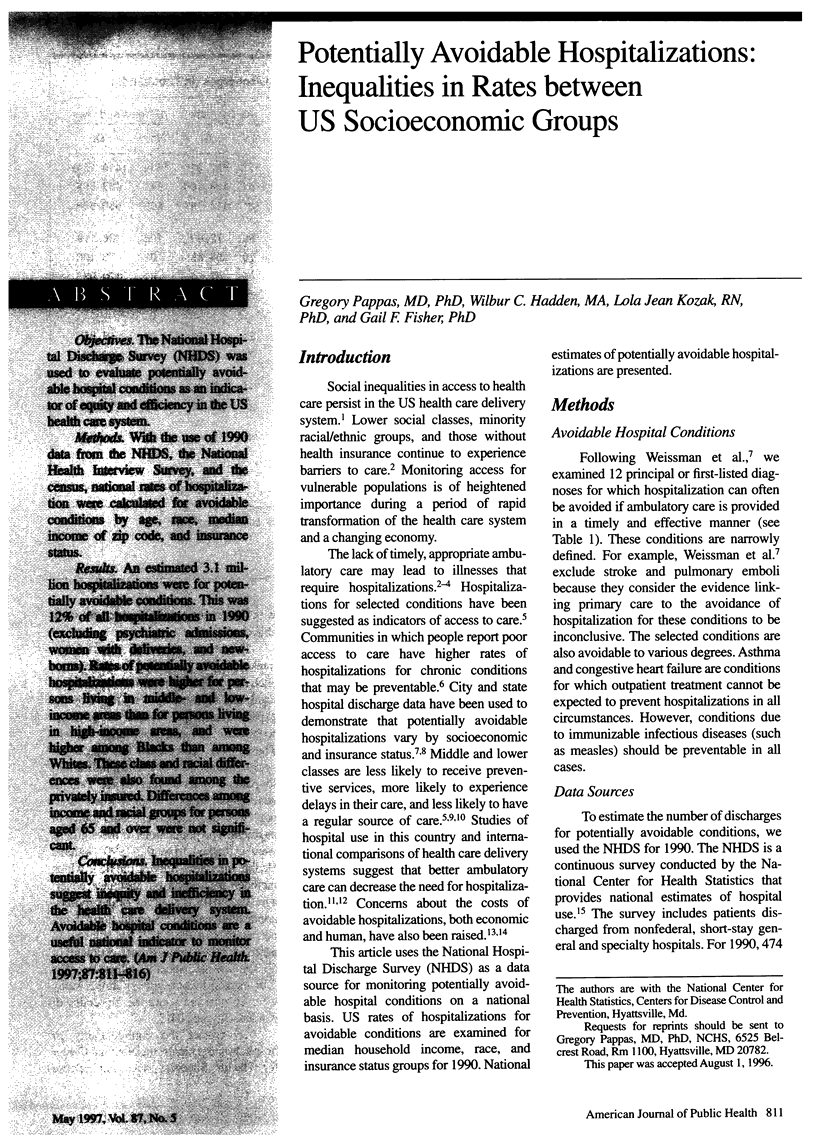
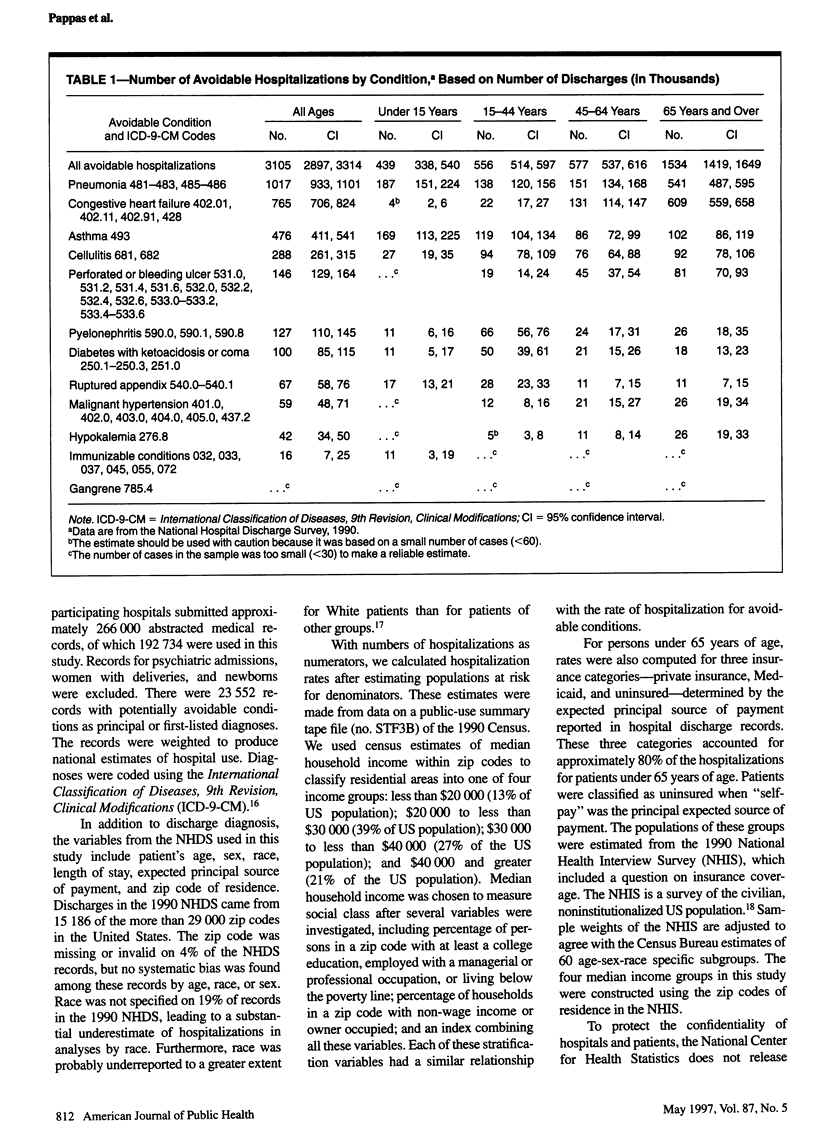
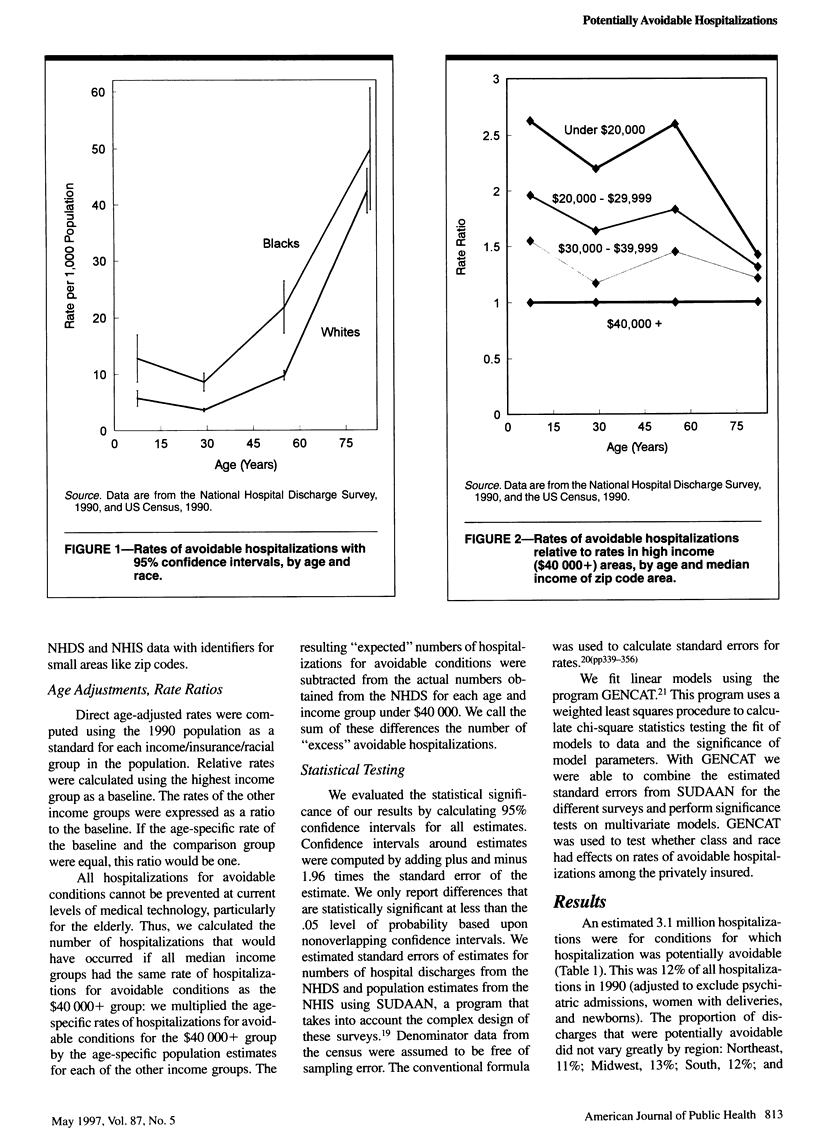
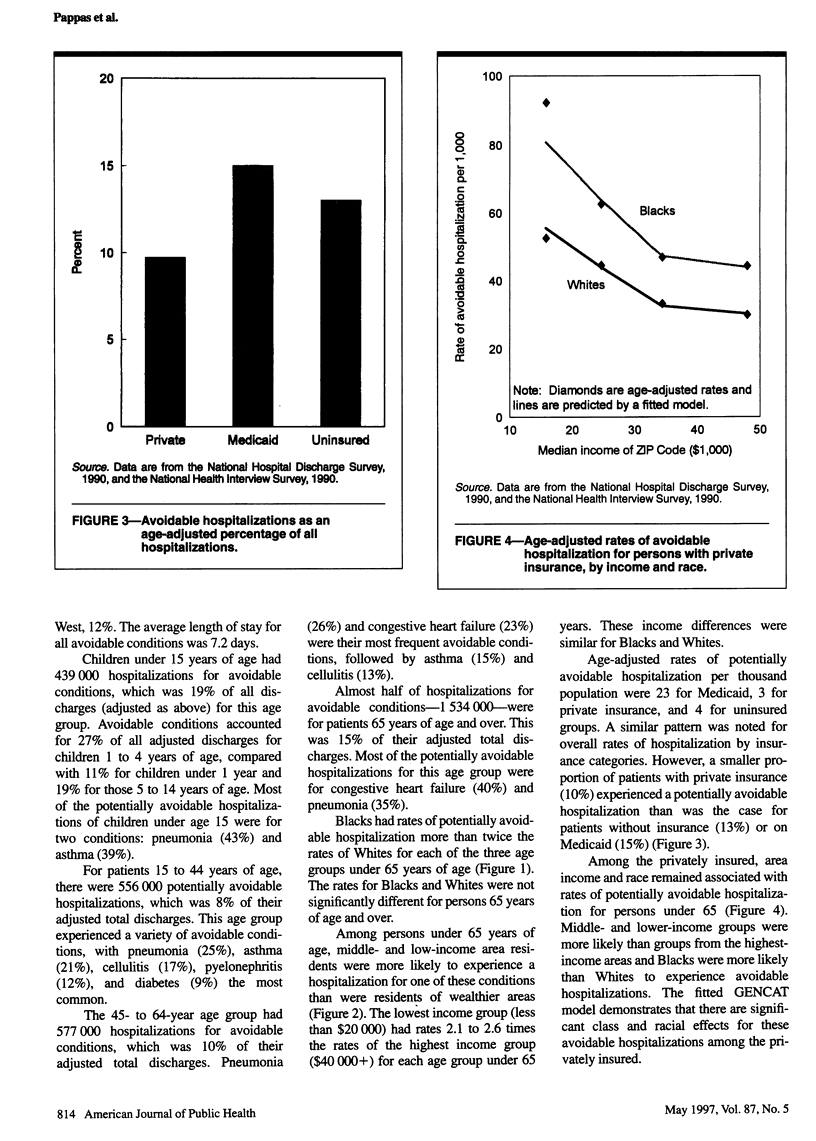
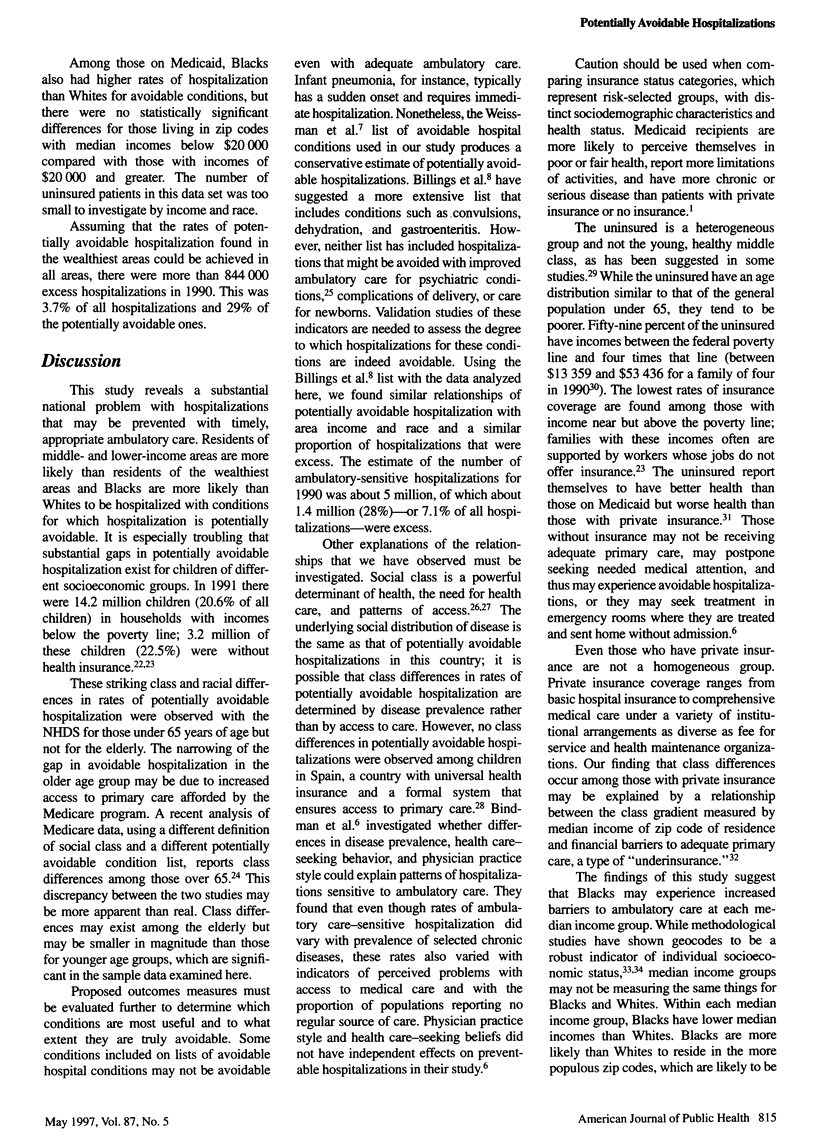
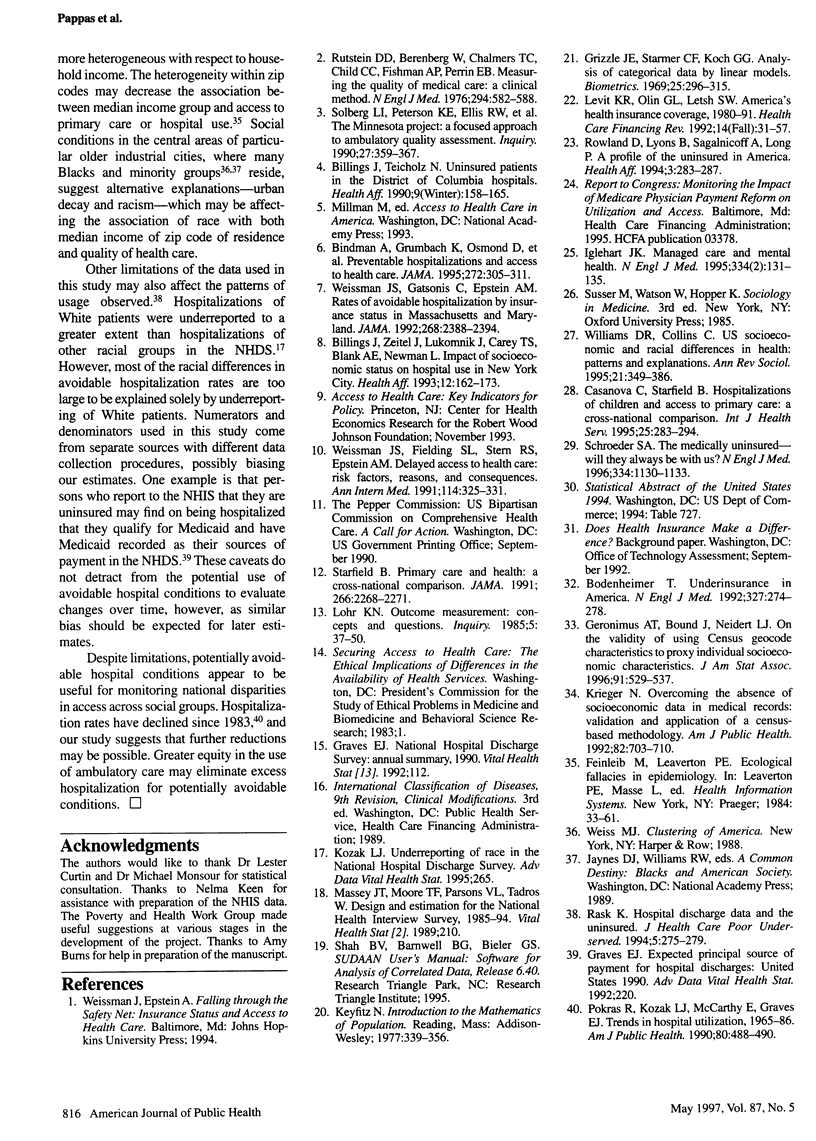
Selected References
These references are in PubMed. This may not be the complete list of references from this article.
- Billings J., Teicholz N. Uninsured patients in District of Columbia hospitals. Health Aff (Millwood) 1990 Winter;9(4):158–165. doi: 10.1377/hlthaff.9.4.158. [DOI] [PubMed] [Google Scholar]
- Billings J., Zeitel L., Lukomnik J., Carey T. S., Blank A. E., Newman L. Impact of socioeconomic status on hospital use in New York City. Health Aff (Millwood) 1993 Spring;12(1):162–173. doi: 10.1377/hlthaff.12.1.162. [DOI] [PubMed] [Google Scholar]
- Bindman A. B., Grumbach K., Osmond D., Komaromy M., Vranizan K., Lurie N., Billings J., Stewart A. Preventable hospitalizations and access to health care. JAMA. 1995 Jul 26;274(4):305–311. [PubMed] [Google Scholar]
- Bodenheimer T. Underinsurance in America. N Engl J Med. 1992 Jul 23;327(4):274–278. doi: 10.1056/NEJM199207233270412. [DOI] [PubMed] [Google Scholar]
- Casanova C., Starfield B. Hospitalizations of children and access to primary care: a cross-national comparison. Int J Health Serv. 1995;25(2):283–294. doi: 10.2190/PCF7-ALX9-6CN3-7X9G. [DOI] [PubMed] [Google Scholar]
- Iglehart J. K. Managed care and mental health. N Engl J Med. 1996 Jan 11;334(2):131–135. doi: 10.1056/NEJM199601113340221. [DOI] [PubMed] [Google Scholar]
- Krieger N. Overcoming the absence of socioeconomic data in medical records: validation and application of a census-based methodology. Am J Public Health. 1992 May;82(5):703–710. doi: 10.2105/ajph.82.5.703. [DOI] [PMC free article] [PubMed] [Google Scholar]
- Levit K. R., Olin G. L., Letsch S. W. Americans' health insurance coverage, 1980-91. Health Care Financ Rev. 1992 Fall;14(1):31–57. [PMC free article] [PubMed] [Google Scholar]
- Pokras R., Kozak L. J., McCarthy E., Graves E. J. Trends in hospital utilization, 1965-86. Am J Public Health. 1990 Apr;80(4):488–490. doi: 10.2105/ajph.80.4.488. [DOI] [PMC free article] [PubMed] [Google Scholar]
- Rask K. J. Hospital discharge data and the uninsured. J Health Care Poor Underserved. 1994;5(4):275–279. doi: 10.1353/hpu.2010.0170. [DOI] [PubMed] [Google Scholar]
- Rowland D., Lyons B., Salganicoff A., Long P. A profile of the uninsured in America. Health Aff (Millwood) 1994 Spring;13(2):283–287. doi: 10.1377/hlthaff.13.2.283. [DOI] [PubMed] [Google Scholar]
- Rutstein D. D., Berenberg W., Chalmers T. C., Child C. G., 3rd, Fishman A. P., Perrin E. B. Measuring the quality of medical care. A clinical method. N Engl J Med. 1976 Mar 11;294(11):582–588. doi: 10.1056/NEJM197603112941104. [DOI] [PubMed] [Google Scholar]
- Schroeder S. A. The medically uninsured--will they always be with us? N Engl J Med. 1996 Apr 25;334(17):1130–1133. doi: 10.1056/NEJM199604253341713. [DOI] [PubMed] [Google Scholar]
- Solberg L. I., Peterson K. E., Ellis R. W., Romness K., Rohrenbach E., Thell T., Smith A., Routier A., Stillmank M. W., Zak S. The Minnesota project: a focused approach to ambulatory quality assessment. Inquiry. 1990 Winter;27(4):359–367. [PubMed] [Google Scholar]
- Starfield B. Primary care and health. A cross-national comparison. JAMA. 1991 Oct 23;266(16):2268–2271. [PubMed] [Google Scholar]
- Weissman J. S., Gatsonis C., Epstein A. M. Rates of avoidable hospitalization by insurance status in Massachusetts and Maryland. JAMA. 1992 Nov 4;268(17):2388–2394. [PubMed] [Google Scholar]
- Weissman J. S., Stern R., Fielding S. L., Epstein A. M. Delayed access to health care: risk factors, reasons, and consequences. Ann Intern Med. 1991 Feb 15;114(4):325–331. doi: 10.7326/0003-4819-114-4-325. [DOI] [PubMed] [Google Scholar]


